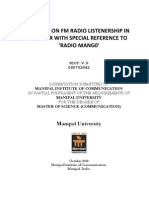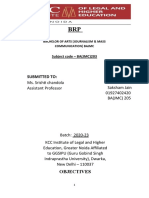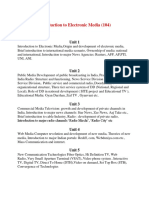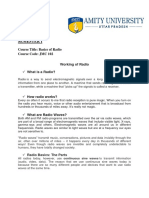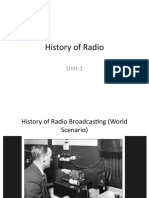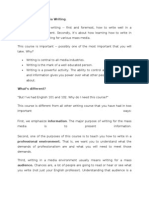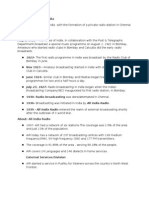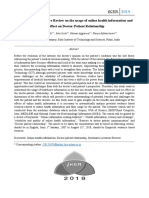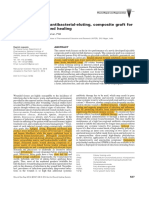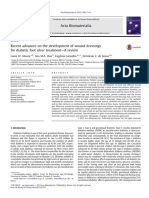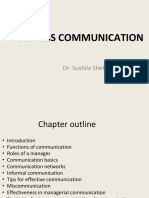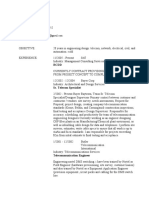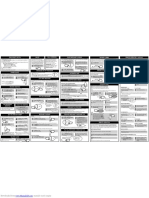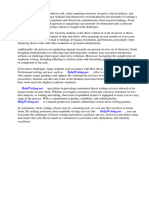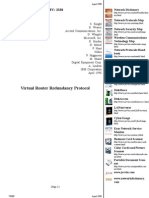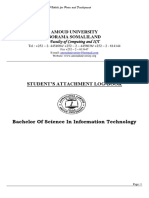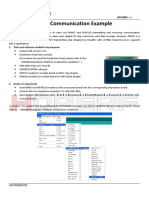0% found this document useful (0 votes)
90 views9 pagesRadio As A Mass Medium: BITS Pilani
Radio was invented in the early 1900s and first broadcasts occurred in the 1920s. Radio came to India in the 1920s through amateur clubs and the government established All India Radio in 1936. Radio includes many formats like news, entertainment, and music. It has the advantages of universal reach and low costs but the disadvantages of limited attention and lack of visuals. Writing for radio requires conciseness, imagination, and simplicity within time frames.
Uploaded by
SHREYA MAHESHWARICopyright
© © All Rights Reserved
We take content rights seriously. If you suspect this is your content, claim it here.
Available Formats
Download as ZIP, PDF, TXT or read online on Scribd
0% found this document useful (0 votes)
90 views9 pagesRadio As A Mass Medium: BITS Pilani
Radio was invented in the early 1900s and first broadcasts occurred in the 1920s. Radio came to India in the 1920s through amateur clubs and the government established All India Radio in 1936. Radio includes many formats like news, entertainment, and music. It has the advantages of universal reach and low costs but the disadvantages of limited attention and lack of visuals. Writing for radio requires conciseness, imagination, and simplicity within time frames.
Uploaded by
SHREYA MAHESHWARICopyright
© © All Rights Reserved
We take content rights seriously. If you suspect this is your content, claim it here.
Available Formats
Download as ZIP, PDF, TXT or read online on Scribd
/ 9














